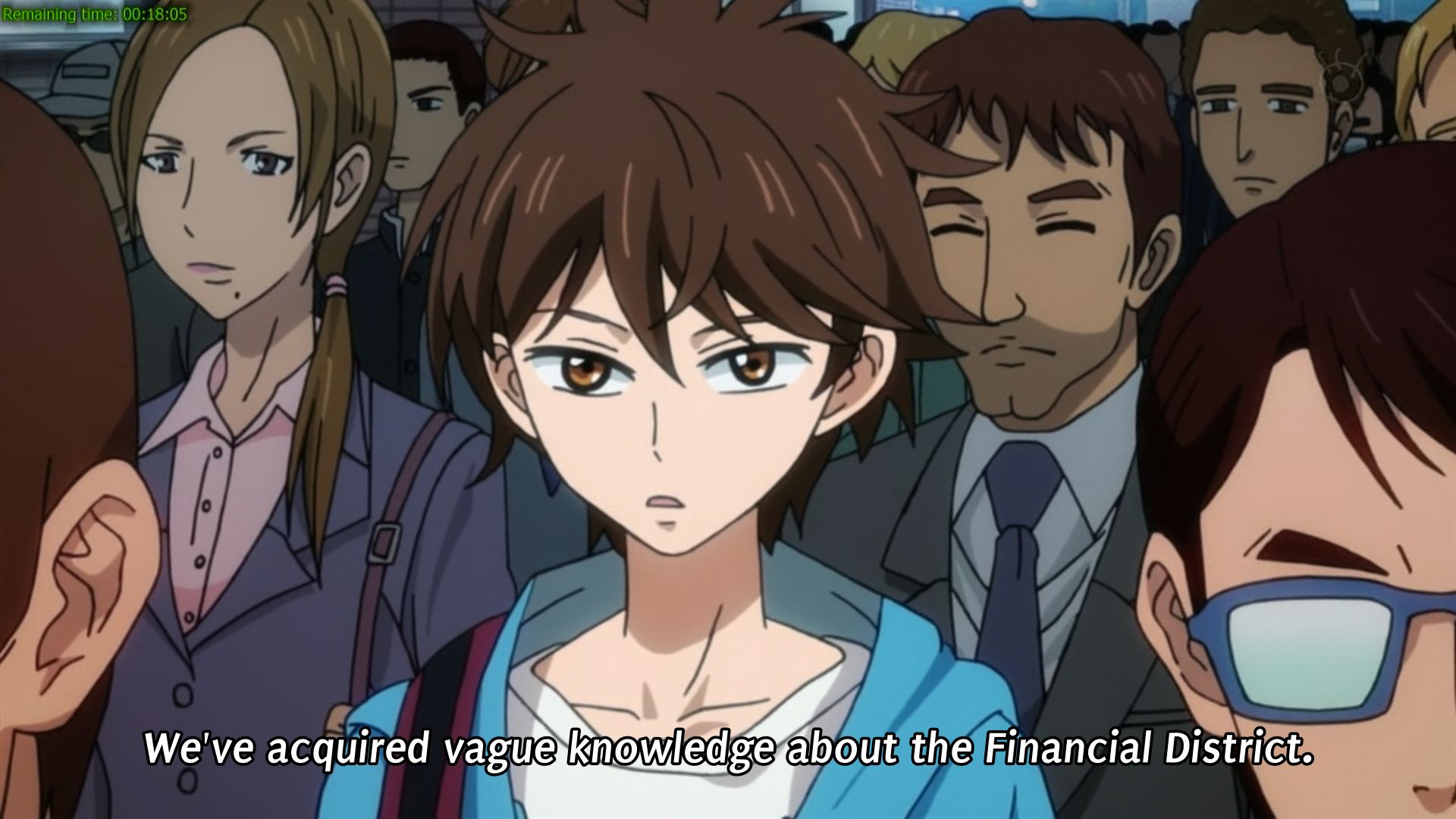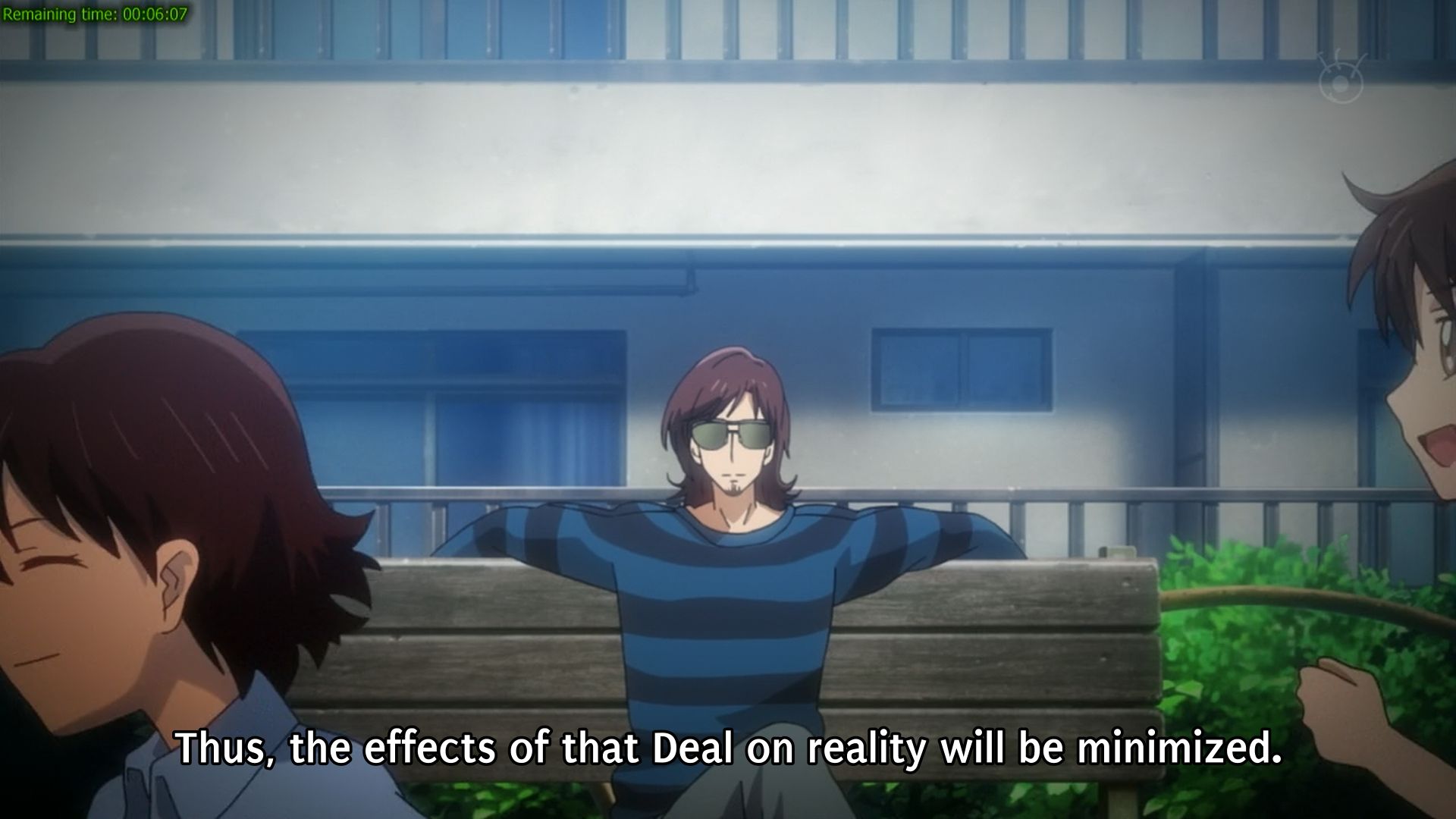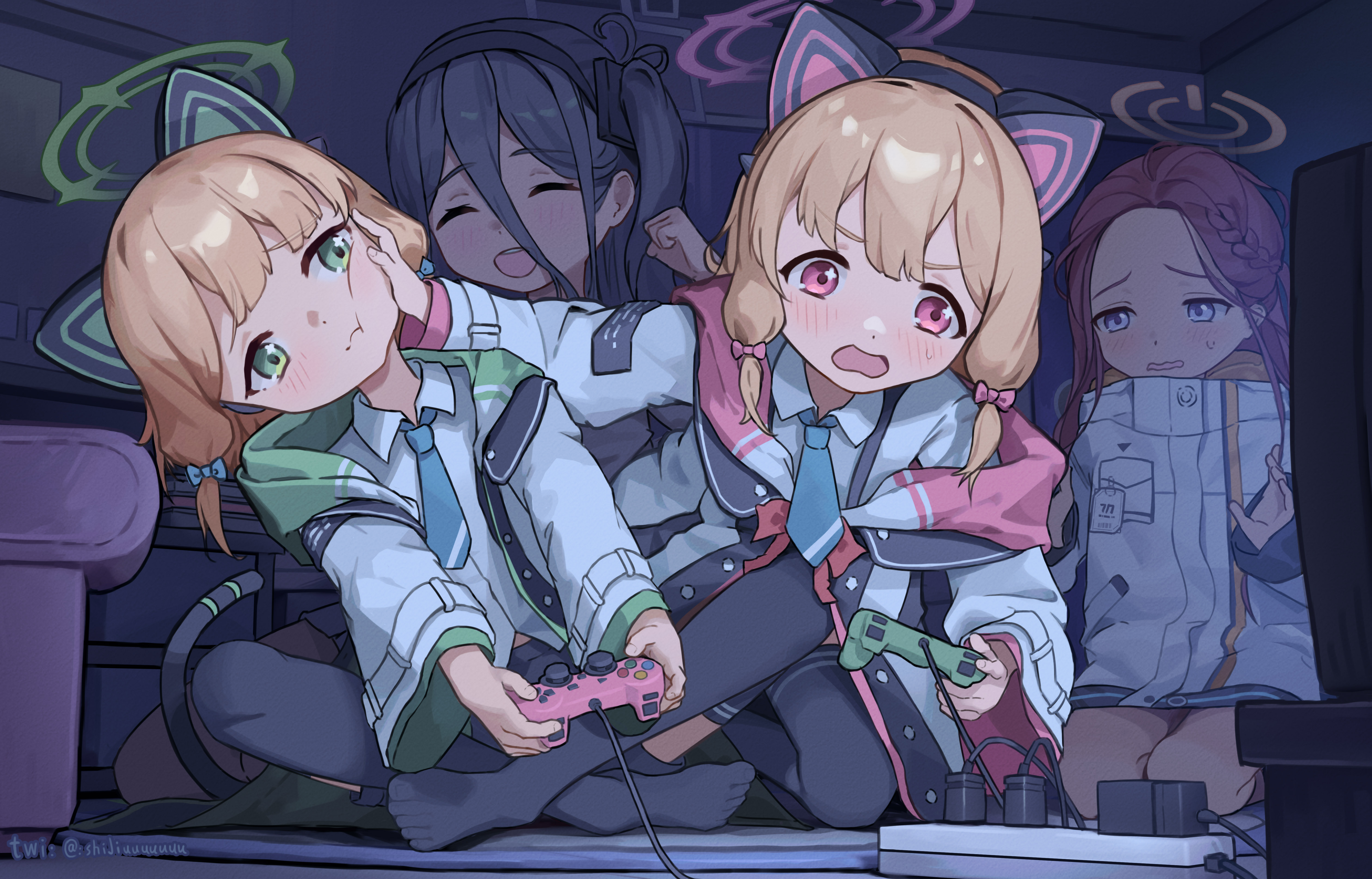
The main male protagonist, holding the fort for Milton Friedman on behalf of International Monetary Fund. IMF in this anime sure is different than the one in real-life.
Tiger and Bunny has just managed to win the ‘Anime of the Year 2011’ title in the last post, and today it has to defend the title against yet another 2011 anime series that I have decided to watch, titled C – The Money of Soul and Possibility – Control. This anime features a never-seen-before concept as the core of its plot, and this results in this anime's failure to unseat Tiger and Bunny’s reign after only one post.
Story:-
Set up in Japan that is under economic and social disarray, our equally struggling main protagonist was randomly selected by a mysterious clown-like person to participate in a series of battles taking place in an alternate dimension. The prize for winning (or not losing too heavily) is money, with his ‘future’ being put up as the collateral for participating in those battles. After winning his first battle completely by pure luck, the main protagonist met with one of veterans of the said game, who seems to be oddly interested in him (not THAT way though).
Take a few characters from the .hack//G.U series (plus significant amount of its plotline), transplant them in a Gantz-like world (use many of its technical structures), then add a couple of plot devices from the Cardfight!! Vanguard anime (the card and the avatar for example), and you will get an anime series that has plenty of battles. But instead of having a ‘save the world’ or ‘good vs. evil’ plots, this anime features prominently a thinly-veiled war between Milton Friedman and John Maynard Keynes macroeconomic principles, where the stake is the existence of Japan itself.
This is where the first weakness of this anime will become more apparent. Unless you are well-versed with both of those two luminaries’ economic principles, there are chances you won’t get to fully understand this anime’s storyline. It can be argued that having the clash between two important economic principles in the plot can make a great storyline, but the risk of making the storyline itself inaccessible because of that is also high. I vastly prefer the way Wolf and Spice does its business, where its microeconomic principles are explained and integrated in its storyline in a way that even a dumb-ass can understand and enjoy. There are reasons why the two seasons of Wolf and Spice do get the perfect score designation after all.
Considering that I do know how the two macroeconomic principles works in general, I do thoroughfully enjoys this series. The usage of plotlines lifted straight from .hack/G.U. (the little sister sub-plot pretty much confirms it) and combined with the aforementioned clash between economic principles, this results in a pretty solid anime title. The pacing of the storyline is excellent, but there are some problems with flow of the story due to repeated use of Katanagatari-esque off-screen battles. What I don’t really like in this anime is that sometimes it shows the main protagonist preparing to battle a foe at the end of an episode, then when the next episode plays, no results from the said battle is being conveyed to the audience at all.
The other weakness of this anime is the ending. Just to make it clear here, this anime’s ending by itself, is quite good, despite being inherently predictable. But some minor plotholes remains after the final episode stopped playing, an example being the like the outcome of the battle between the IMF mole in the guild and one of main antagonist’s lieutenants. This anime is the kind that need the kind of ending that Kore wa Zombie Desu ka? has the most; a complete episode dedicated solely for the aftermath. I think there is a series that does exactly just that, but I cannot remember which one. The paltry 2 minutes airtime dedicated in this anime to show what happened after the main protagonist saves Japan is simply not good enough.
This anime has low amount of recurring characters. Unlike Tiger and Bunny, characters in this anime doesn’t really stand out to help drive this series forward, with this anime being more story-driven instead of being backed up by powerful and interesting characters. The two main characters depicted in the screenshots in this blog post are not exactly inspirational, and this would have helped this anime more if they are.

The main antagonist of this anime. While not hoisting the Keynesian flag behind the scenes of Japan's executive branch, he can be seen loitering at the local park staring at little kids.
Character Design:-
Character designs in this anime reminds me of Ookiku Furikabutte a lot, especially for the design of main protagonist. This is not a bad thing though. Anyway, the designs in this anime is good, although just like Ookiku Furikabutte, lack of black hairs (and the abundance of brown hairs) in this anime set up in modern Japan is quite unbelievable really. Then again, the parallel dimension thingy is unbelievable in the first place…
Voice Acting:-
Voice acting in this anime is good in general, with some excellent gigs can be heard from the main protagonist’s avatar, the moderator of the Financial District and also the main antagonist. At least there are no bad ones though.
Music:-
The OST of this anime is very good, but not so for the OP and ED themes.
Animation/Direction:-
This anime uses the blurry animation technique extensively in many slow-paced scenes throughout the series, therefore one point will be docked from the final evaluation. Apart from that, the animation quality is decent, even in fast-paced scenes. CGI and 2D integration is poorly done most of the time though. Choreography isn’t exactly good, Tiger and Bunny has done better in this aspect. The directing is mostly good most of the time, except for the handling of the ending’s presentation.
Conclusion:-
8 out of 10. A decent card-based battle if you ask me. Can be inaccessible though for those who doesn’t have a degree in economics. Tiger & Bunny passed its first challenge with flying colors.
Shortlink: http://wp.me/prgSo-x8


/sacred7 - the main male protagonist with an awesome ride.jpg)
/sacred7 - and in double quick time he has fallen in love.jpg)
/sacred7 - the main fmelae protagonist doesn't help thing either.jpg)
/sacred7 - and by this point of the series he has already become ichika.jpg)
/sacred7 - at this scene i wonder WTF is the bad guy is doing.jpg)
/Aog7F.jpg)
/FICWf.jpg)
/wBHSG.jpg)
/rCvfL.jpg)
/1rDUP.jpg)
/wLDgo.jpg)




















